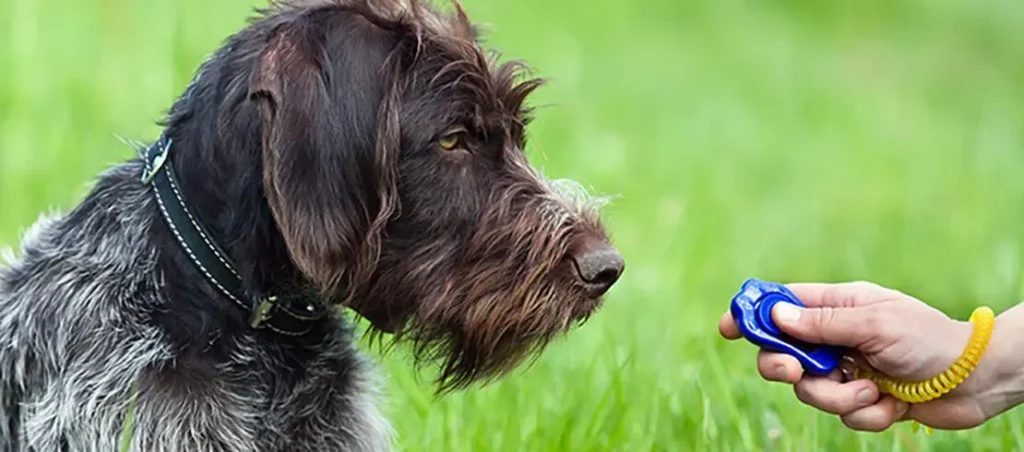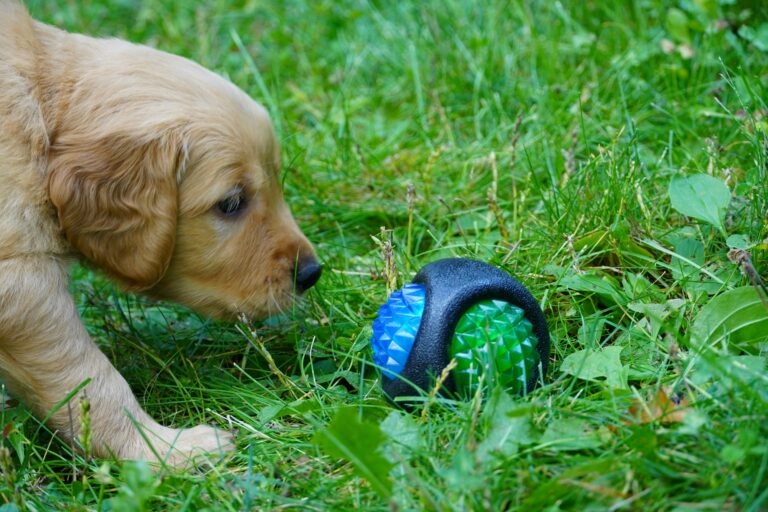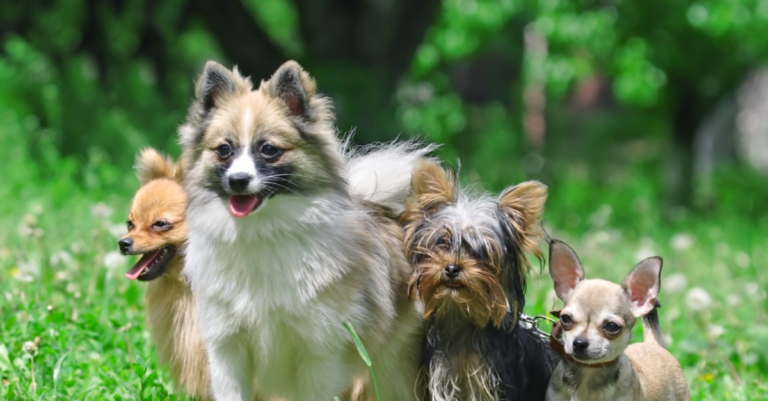Ready to unlock the secret to effective puppy training? Welcome to “Pawsitive Results: Clicker Training Tips for Small Breed Puppies”. This comprehensive guide offers insightful, practical advice to pet owners navigating the exciting journey of training their small breed puppies using the clicker method. From understanding the basics of this technique to exploring its intricate details, this guide has got you covered.
The journey begins with an introduction to clicker training – a positive reinforcement method that has been proven successful and effective in training puppies of small breeds. Whether you’re a first-time pet owner or an experienced dog trainer, understanding the science behind this method will enable you to teach your puppies with ease and efficacy.
As we delve deeper, we’ll look into the practical aspects of clicker training, including when to start, the types of commands best suited for this technique, and tips for avoiding common pitfalls. Furthermore, you will also learn how to keep your puppy engaged and interested throughout the training process, ensuring that learning new behaviors becomes a fun and enjoyable experience for your furry friend.

Wrapping up, we’ll highlight some real-life success stories, demonstrating how clicker training has transformed the lives of small breed puppies and their owners. With this guide, you’ll be well-equipped to embark on a rewarding journey of training your puppy, strengthening your bond, and enjoying the ‘pawsitive’ results. Stay tuned!
Understanding Clicker Training
Clicker training is a science-based method of dog training that involves the use of a small device that makes a distinct, consistent sound. This device, known as a clicker, is used to mark the exact moment a puppy performs a desired behavior. The clicker sound is always followed by a reward, usually in the form of a treat, making the puppy associate the sound with a positive outcome.
This training methodology is based on the behavioral psychology principle of operant conditioning, which states that behaviors that are reinforced are more likely to be repeated in the future. This principle is utilized in clicker training to encourage and shape desirable behaviors in small breed puppies. By consistently marking and rewarding behaviors, owners can effectively communicate with their puppies in a way that is clear and motivating.
Clicker training is not limited to teaching tricks or obedience commands. It can be used for house training, socialization exercises, behavior modification, and even therapy dog preparation. Its versatility and positive approach make it ideal for the sensitive nature of small breed dogs.
Why Clicker Training is Effective for Small Breed Puppies
Clicker training is particularly effective for small breed puppies because it is a positive, reward-based method of training. This approach is conducive to their size, as it does not involve any harsh corrections or physical force, which could be potentially harmful to smaller dogs. Furthermore, the clear and distinct sound of the clicker provides an immediate feedback that helps the puppy to understand exactly what behavior is being rewarded, making learning faster and more efficient.
Small breed puppies are often highly alert and sensitive to their environments. They can easily become fearful or anxious if training methods are too harsh or confusing. Clicker training creates a safe and predictable learning environment where puppies can succeed without fear. Each click builds the puppy’s confidence, encouraging them to offer new behaviors and eagerly participate in training sessions.
Another advantage is that small breed puppies often have a lot of energy and curiosity. Clicker training taps into this natural enthusiasm by turning training into a fun, interactive game. Short, engaging sessions prevent boredom and keep the puppy mentally stimulated, contributing to better overall behavior.
Essential Clicker Training Tips
To achieve positive results with clicker training, it is important to follow a set of guidelines. These tips will not only help you to effectively train your small breed puppy, but will also ensure that the training process is a positive and enjoyable experience for both of you.
Timing is Crucial
In clicker training, timing is everything. It is essential to click at the exact moment your puppy performs the desired behavior. This precise timing helps the puppy to clearly associate the behavior with the reward. Delaying the click can lead to confusion and slower learning.
Practicing your timing separately with human partners or using mock training exercises can help you perfect this skill before working with your puppy. Quick, accurate clicking becomes second nature with practice and ensures that the communication between you and your puppy remains crystal clear.
Always Follow the Click with a Reward
Consistency is key in clicker training. Always follow the click with a reward to reinforce the positive association. This reward could be a small treat, a toy, or even praise. It is crucial that the reward is something your puppy finds truly enjoyable.
Over time, the click itself becomes a powerful reinforcer because the puppy learns that it always predicts something good. Skipping the reward, even occasionally, can weaken this important association and slow down your puppy’s progress.
Treats used for training should be small, soft, and high-value to ensure your puppy stays motivated without becoming overly full during sessions.
Using Different Training Techniques with the Clicker
Clicker training can be adapted to teach a wide variety of behaviors using different techniques. Here are three foundational methods that small breed owners often find most effective:
Luring
Luring involves using a treat or toy to guide your puppy into performing a specific behavior. For instance, you can use a treat to lure your puppy into a sitting position. Once your puppy is in the desired position, click and reward.
Luring is especially useful for teaching foundational commands such as sit, down, and spin. It provides a visual cue that helps puppies understand what is expected, making initial learning faster and less frustrating.
Gradually, as your puppy learns the behavior, you can phase out the lure and transition to using verbal cues alone.
Capturing
Capturing is the technique of catching your puppy in the act of performing a desired behavior naturally. When your puppy performs the behavior, immediately click and reward.
This method is ideal for encouraging behaviors that puppies might offer on their own, such as lying down quietly, looking at you, or sitting politely without being asked. Capturing teaches puppies that good things happen when they make good choices, even without direct prompting.
Capturing is also highly effective for reinforcing calm behaviors, which are especially valuable for small breeds that tend to be excitable.
Shaping
Shaping involves breaking down a complex behavior into smaller steps. You click and reward your puppy for each step towards the final behavior.
For example, if you are teaching your puppy to fetch, you might first reward them for looking at the ball, then for moving towards the ball, then for touching it with their nose, and so on until they are picking it up and bringing it back.
Shaping builds problem-solving skills and encourages creativity in your puppy. It allows them to actively engage in the learning process rather than just passively responding to cues.
Creating a Structured Training Routine
Successful clicker training requires more than just a good technique; it also benefits greatly from a structured routine. Training should be incorporated into daily life in a way that feels natural and manageable.
Short, frequent sessions work best for small breed puppies. Aim for three to five-minute sessions two to three times a day. These short bursts of learning keep the puppy engaged without overwhelming them.
Consistency is vital. Using the same cues, maintaining the same reward structure, and training in similar environments at first will help solidify learning. As your puppy becomes more skilled, you can introduce greater variability in your training sessions to promote generalization.
Maintaining Motivation and Focus
Keeping your small breed puppy motivated and focused during clicker training is essential for success. Rotate different types of rewards to maintain interest. Use treats, praise, toys, or opportunities to play as reinforcement.
Training in low-distraction environments initially helps puppies succeed. Gradually increase distractions only after your puppy consistently performs the behavior in easier settings.
Keeping sessions upbeat, ending them on a positive note, and avoiding pushing your puppy beyond their mental or physical limits ensures that training remains a highlight of their day rather than a chore.
Transitioning Away from the Clicker
Eventually, the goal is to phase out the clicker once behaviors are reliably learned. Begin by using the clicker intermittently rather than for every correct behavior.
Move towards using verbal praise and natural rewards like petting or play. The clicker remains a valuable tool for teaching new behaviors, but it does not have to be used indefinitely for every command once your puppy understands what is expected.
This gradual transition ensures that behaviors remain strong even when the clicker is no longer in use, providing lifelong obedience and responsiveness.
Clicker Training Techniques for Small Breed Puppies
Training a small breed puppy using a clicker involves several techniques. Each technique aims to encourage specific behaviors while discouraging others. Let’s take a look at some of these techniques:
Luring
Luring involves using a treat or toy to guide your puppy into performing a specific behavior. For instance, you can use a treat to lure your puppy into a sitting position. Once your puppy is in the desired position, click and reward.
Capturing
Capturing is the technique of catching your puppy in the act of performing a desired behavior naturally. When your puppy performs the behavior, immediately click and reward.
Shaping
Shaping involves breaking down a complex behavior into smaller steps. You click and reward your puppy for each step towards the final behavior. For example, if you are teaching your puppy to fetch, you might first reward them for looking at the ball, then for moving towards the ball, and so on until they are performing the full behavior.
Common Clicker Training Challenges
While clicker training is generally an effective method, there are some common challenges that may arise during the training process. Here are a few, along with potential solutions:
Overexcitement
Some puppies may become overexcited by the sound of the clicker or the prospect of a reward. In such cases, it may be helpful to use lower value treats, or even kibble, as rewards. Gradually, you can build up to more exciting rewards as your puppy learns to control their excitement.
Fear of the Clicker
A small number of puppies may initially be frightened by the sound of the clicker. If this is the case, you can try muffling the sound with a piece of cloth or using a softer sounding clicker. Over time, your puppy will likely become accustomed to the sound.

Impatience
Remember, learning takes time. Patience is crucial in clicker training. Avoid the temptation to rush the process. Each puppy learns at their own pace, and it’s important to allow your puppy the time they need to understand and learn each new behavior.
Final Thoughts
Clicker training can be a highly effective method for training small breed puppies. It is a positive, reward-based approach that is not only effective but also enjoyable for both the puppy and the trainer. With patience, consistency, and proper technique, you can achieve pawsitive results with clicker training.
Conclusion
In conclusion, “Pawsitive Results: Clicker Training Tips for Small Breed Puppies” effectively demonstrates the numerous benefits and techniques of clicker training for smaller breed puppies. The article underscores the importance of consistency, patience, and positive reinforcement in training your furry friend, highlighting the key role these factors play in shaping your puppy’s behavior.
The use of a clicker can undoubtedly streamline the training process and fast-track your puppy’s understanding of commands, by creating a clear, audible signal for desired behavior. Despite being a small gadget, it has a huge potential to positively influence your puppy’s learning curve and behavior, if used correctly.
Remember, every puppy is unique and may require different approaches. Therefore, tailoring your clicker training to suit your puppy’s pace and personality can enhance its effectiveness. It’s not about quick fixes, but fostering a bond of trust and communication with your pet.
Training your puppy with the clicker method not only instills good behavior but also serves as a fun and engaging activity that strengthens your bond with your pet. So, be patient, stay consistent, and watch your puppy grow into a well-trained, obedient companion. 🐾
Embrace clicker training and witness ‘pawsitive’ results in your small breed puppy!



